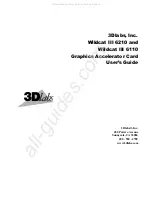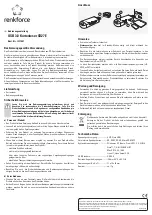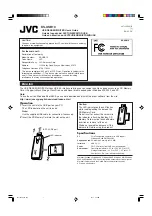
58 PCIE-5565PIORC Reflective Memory Board
3.3.9 Network Interrupt Command Register
Network
Interrupt
Command
(NIC)
BAR2
(Offset
$1D):
An
8
‐
bit
register
containing
a
four
‐
bit
code
that
defines
the
type
of
network
interrupt
issued.
See
for
a
definition
of
the
possible
codes.
The
NIC
is
both
read
and
write
accessible.
Only
writing
to
the
NIC
register
will
initiate
the
network
interrupt.
The
network
interrupt
is
transmitted
in
order
following
after
all
previously
written
data.
The
NTD,
NTN
and
the
NIC
registers
described
above
are
used
to
generate
network
interrupts.
Four
pairs
of
registers
described
below
are
involved
with
receiving
those
network
interrupts.
3.3.10 Interrupt 1 Sender Data FIFO
Interrupt
1
Sender
Data
FIFO
(ISD1)
BAR2
(Offset
$20):
A
32
‐
bit
FIFO
containing
up
to
127
Dwords
of
data,
which
has
been
sent
to
this
node
in
type
1
network
interrupt
packets.
The
function
of
the
32
bits
of
data
is
user
defined.
The
ISD1
is
a
127
location
deep
FIFO,
but
it
is
coupled
and
slaved
to
the
companion
FIFO
SID1.
Essentially,
there
is
only
one
address
pointer
for
both
FIFOs
and
that
pointer
is
only
affected
by
access
to
the
SID1
FIFO.
For
this
reason,
each
location
within
the
data
(ISD1)
FIFO
can
be
read
multiple
times
without
incrementing
the
address
pointer,
while
reading
the
companion
SID1
FIFO
increments
the
pointer
for
both
FIFOs.
For
this
same
reason,
the
user
must
read
the
data
(ISD1)
before
the
Sender
ID
(SID1)
or
the
corresponding
data
will
be
lost.
3.3.11 Interrupt 1 Sender ID FIFO
Interrupt
1
Sender
ID
FIFO
(SID1)
BAR2
(Offset
$24):
An
8
‐
bit
FIFO
containing
the
Node
ID
corresponding
to
the
data
in
ISD1.
Each
time
one
node
issues
a
network
interrupt,
it
includes
its
own
node
ID
as
part
of
the
packet.
At
each
other
network
node,
the
interrupt
packet
is
evaluated.
If
the
network
interrupt
is
directed
to
that
node,
and
if
the
network
interrupt
is
of
type
1,
then
the
sender’s
node
ID
is
stored
in
a
127
location
deep
FIFO
called
the
Interrupt
1
Sender
ID
FIFO
or
SID1.
Like
any
normal
FIFO,
each
time
the
SID1
is
read,
the
FIFO
address
pointer
automatically
increments
to
the
next
location
in
the
FIFO.
Therefore,
each
sender
ID
can
only
be
read
once
from
the
SID1
FIFO.
Writing
any
data
to
the
SID1
FIFO
causes
the
SID1
FIFO
to
be
set
to
empty.
Note
that
the
value
of
zero
is
NOT
a
true
indicator
that
the
FIFO
is
empty
since
zero
is
also
a
valid
node
ID.
To
see
if
Table 3-55 Network Interrupt Command Register
NIC: BAR2 Offset $1D
NIC[3,2,1,0]
Function
X000
Reset Node Request (sets LISR Bit 03 only, the user application must perform the
actual reset)
X001
Network Interrupt 1 (stored in a 127 deep FIFO at the receiving node)
X010
Network Interrupt 2 (stored in a 127 deep FIFO at the receiving node)
X011
Network Interrupt 3 (stored in a 127 deep FIFO at the receiving node)
X100
Reserved (Setting to this type will only set the OWN DATA bit in the LCSR1)
X101
Reserved (Setting to this type will only set the OWN DATA bit in the LCSR1)
X110
Reserved (Setting to this type will only set the OWN DATA bit in the LCSR1)
X111
Network Interrupt 4 (stored in a 127 deep FIFO at the receiving node)
1XXX
Global enable. Send to all nodes regardless of NTN Register













































